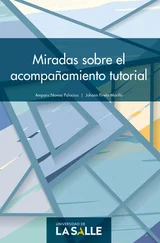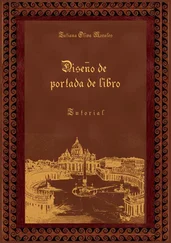Oskar Andreasson - Iptables Tutorial 1.2.2
Здесь есть возможность читать онлайн «Oskar Andreasson - Iptables Tutorial 1.2.2» весь текст электронной книги совершенно бесплатно (целиком полную версию без сокращений). В некоторых случаях можно слушать аудио, скачать через торрент в формате fb2 и присутствует краткое содержание. Жанр: Интернет, на русском языке. Описание произведения, (предисловие) а так же отзывы посетителей доступны на портале библиотеки ЛибКат.
- Название:Iptables Tutorial 1.2.2
- Автор:
- Жанр:
- Год:неизвестен
- ISBN:нет данных
- Рейтинг книги:4 / 5. Голосов: 1
-
Избранное:Добавить в избранное
- Отзывы:
-
Ваша оценка:
- 80
- 1
- 2
- 3
- 4
- 5
Iptables Tutorial 1.2.2: краткое содержание, описание и аннотация
Предлагаем к чтению аннотацию, описание, краткое содержание или предисловие (зависит от того, что написал сам автор книги «Iptables Tutorial 1.2.2»). Если вы не нашли необходимую информацию о книге — напишите в комментариях, мы постараемся отыскать её.
Iptables Tutorial 1.2.2 — читать онлайн бесплатно полную книгу (весь текст) целиком
Ниже представлен текст книги, разбитый по страницам. Система сохранения места последней прочитанной страницы, позволяет с удобством читать онлайн бесплатно книгу «Iptables Tutorial 1.2.2», без необходимости каждый раз заново искать на чём Вы остановились. Поставьте закладку, и сможете в любой момент перейти на страницу, на которой закончили чтение.
Интервал:
Закладка:
• Firewall rules table- A small PDF document gracefully given to this project by Stuart Clark, which gives a reference form where you can write all of the information needed for your firewall, in a simple manner.
• http://l7-filter.sourceforge.net/- The l7-filter project is basically a set of patches and files to make iptables and netfilter able to handle layer 7 filtering, mainly for QoS and traffic accounting. It works less reliably for filtering however, since it will allow the first couple of packets through before actually blocking traffic.
• http://www.netfilter.org/- The official Netfilter and iptables site. It is a must for everyone wanting to set up iptables and Netfilter in linux.
• http://www.insecure.org/nmap/- Nmap is one of the best, and most known, port scanners available. It is very useful when debugging your firewall scripts. Take a closer look at it.
• http://www.netfilter.org/documentation/index.html#FAQ- The official Netfilter Frequently Asked Questions . Also a good place to start at when wondering what iptables and Netfilter is about.
• http://www.netfilter.org/unreliable-guides/packet-filtering-HOWTO/index.html- Rusty Russells Unreliable Guide to packet filtering. Excellent documentation about basic packet filtering with iptables written by one of the core developers of iptables and Netfilter.
• http://www.netfilter.org/unreliable-guides/NAT-HOWTO/index.html- Rusty Russells Unreliable Guide to Network Address Translation. Excellent documentation about Network Address Translation in iptables and Netfilter written by one of the core developers, Rusty Russell.
• http://www.netfilter.org/unreliable-guides/netfilter-hacking-HOWTO/index.html- Rusty Russells Unreliable Netfilter Hacking HOW-TO. One of the few documentations on how to write code in the Netfilter and iptables user-space and kernel space code-base. This was also written by Rusty Russell.
• http://www.linuxguruz.org/iptables/- Excellent link-page with links to most of the pages on the Internet about iptables and Netfilter. Also maintains a list of iptables scripts for different purposes.
• Policy Routing using Linux- The best book I have ever read on Policy routing nad linux. This is an absolute must when it comes to routing in linux. Written by Matthew G. Marsh.
• Implementing Quality of Service Policies with DSCP- A link about the cisco implementation of DSCP. This shows some classes used in DSCP, and so on.
• IETF SIP Working Group- SIP is one of the "next big things" it seems. Basically it is the defacto standards for Internet telephony today. It is horribly complex as you can see from the amount of documentation on the working groups homepage, and should hopefully be able to cope with pretty much any needs of session initiation in the future. It is used mainly to setup peer to peer connections between known users, for example to connect to user@example.org and setup a phone connection to that user. This is the IETF Working group handling all SIP work.
• IETF TLS Working Group- TLS is a transport layer security model that is one of the most common host to server based security mechanisms. The current version is running is 1.1 and work is ongoing to get 1.2 out the door with support for newer and better cryptos as of this writing. This is a standardized way of sending and receiving public keys for servers and handling trusted certificate agents etc. For more information, read the RFC's on this page.
• IPSEC Howto- This is the official IPSEC howto for Linux 2.6 kernels. It describes how IPSEC works in the 2.6 kernels and up, however, it is not the place to find out exactly how the Linux 2.2 and 2.4 kernels worked when it comes to IPSEC. Go to the FreeS/WAN site for that information.
• FreeS/WAN- This is the official site for FreeS/WAN, an IPSEC implementation for the Linux 2.2 and 2.4 kernel series. This site contains documentation and all necessary downloads for the IPSEC implementation. This effort has been discontinued due to several reasons discussed on the page, but efforts will still be put into bugfixes, documentation and the forums. For an IPSEC implementation for Linux 2.6 kernels, please look at the IPSEC Howto site and the information there.
• http://www.islandsoft.net/veerapen .html-Excellent discussion on automatic hardening of iptables and how to make small changes that will make your computer automatically add hostile sites to a special ban list in iptables .
• /etc/protocols- An example protocols file taken from the Slackware distribution. This can be used to find out what protocol number different protocols have, such as the IP, ICMP or TCP protocols have.
• /etc/services- An example services file taken from the Slackware distribution. This is extremely good to get used to reading once in a while, specifically if you want to get a basic look at what protocols runs on different ports.
• Internet Assigned Numbers Authority- The IANA is the organisation that is responsible for fixing all numbers in the different protocols in an orderly fashion. If anyone has a specific addition to make to a protocol (for example, adding a new TCP option), they need to contact the IANA, which will assign the numbers requested. In other words, extremely important site to keep an eye on.
• RFC-editor.org- This is an excellent site for finding RFC documents in a fast and orderly way. Functions for searching RFC documents, and general information about the RFC community (I.e., errata, news, et cetera).
• Internet Engineering Task Force- This is one of the biggest groups when it comes to setting and maintaining Internet standards. They are the ones maintaining the RFC repository, and consist of a large group of companies and individuals that work together to ensure the interoperability of the Internet.
• Linux Advanced Routing and Traffic Control HOW-TO- This site hosts the Linux Advanced Routing and Traffic Control HOWTO. It is one of the biggest and best documents regarding Linux advanced routing. Maintained by Bert Hubert.
• Paksecured Linux Kernel patches- A site containing all of the kernel patches written by Matthew G. Marsh. Among others, the FTOS patch is available here.
• ULOGD project page- The homepage of the ULOGD site.
• The Linux Documentation Projectis a great site for documentation. Most big documents for Linux is available here, and if not in the TLDP, you will have to search the net very carefully. If there is anything you want to know more about, check this site out.
• Snort- this is an excellent open source "network intrusion detection system" (NIDS) which looks for signatures in the packets that it sees, and if it sees a signature of some kind of attack or break-in it can do different actions that can be defined (notifying the administrator, or take action, or simply logging it).
• Tripwire- tripwire is an excellent security tool which can be used to find out about host intrusions. It makes checksums of all the files specified in a configuration file, and then it tells the administrator about any files that has been tampered with in an illegit way every time it is run.
• Squid- This is one of the most known webproxies available on the market. It is open source, and free. It can do several of the filtering tasks that should be done before the traffic actually hits your webserver, as well as doing the standard webcaching functions for your networks.
• http://kalamazoolinux.org/presentations/20010417/conntrack.html- This presentation contains an excellent explanation of the conntrack modules and their work in Netfilter. If you are interested in more documentation on conntrack, this is a "must read".
• http://www.docum.org- Excellent information about the CBQ, tc and the ip commands in Linux. One of the few sites that has any information at all about these programs. Maintained by Stef Coene.
Читать дальшеИнтервал:
Закладка:
Похожие книги на «Iptables Tutorial 1.2.2»
Представляем Вашему вниманию похожие книги на «Iptables Tutorial 1.2.2» списком для выбора. Мы отобрали схожую по названию и смыслу литературу в надежде предоставить читателям больше вариантов отыскать новые, интересные, ещё непрочитанные произведения.
Обсуждение, отзывы о книге «Iptables Tutorial 1.2.2» и просто собственные мнения читателей. Оставьте ваши комментарии, напишите, что Вы думаете о произведении, его смысле или главных героях. Укажите что конкретно понравилось, а что нет, и почему Вы так считаете.








